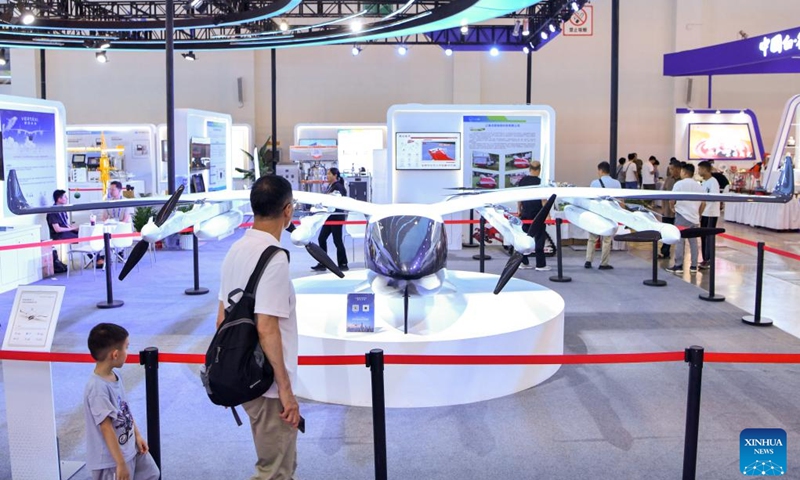
People visit the 8th China-South Asia Expo in Kunming, southwest China's Yunnan Province, July 25, 2024. The 8th China-South Asia Expo opened here on Tuesday, attracting over 2,000 exhibitors. Visitors learned about and experienced exhibits featuring cutting-edge technologies in the fields of digital economy, artificial intelligence, green energy, low-altitude economy and others. (Photo: Xinhua)
Shanghai will establish a preliminary low-altitude communication network by 2026, with continuous coverage across the city's low-altitude flight routes, according to a guideline released by the Shanghai Communications Administration on Friday, making it an early example for more cities in China to follow.
This network will meet the requirements for transmitting low-altitude flight data and high-definition video images, and will also have the capability for enhanced perception upgrades, according to the guideline.
The publication of the guideline indicates that China's low-altitude economic development has entered a new phase, providing a solid foundation for the broader applications of related products in the sector, a Chinese expert said.
The guideline proposes strengthening the infrastructure for low-altitude networks. It also calls for the phased and regional implementation of low-altitude intelligent network coverage based on 5G-A. The city will also explore the integration of low-altitude intelligent networks with satellite technology to create a unified space-ground network.
The guideline encourages companies in the information and communication technology sector to participate in the development of low-altitude flight regulatory service platforms.
The city will leverage the broad coverage capabilities of the low-altitude intelligent network to expand emergency rescue applications, including aerial firefighting, aerial rescue, public health, emergency communication, and logistics for delivery and express services.
The city has also vowed to accelerate the exploration of electric vertical take-off and landing (eVTOL) urban air mobility applications, such as business travel, air taxis, and private charters. Additionally, it will seek to expand new consumer applications such as low-altitude tourism.
On the same day, the Shanghai municipal government released the "action plan for the high-quality development of the low-altitude economy in Shanghai from 2024 to 2027," outlining the establishment of a comprehensive industrial system for the research and development, design, assembly, manufacturing, airworthiness testing, and commercial application of new low-altitude aircraft by 2027. By 2027, the city expects the core industry to reach a scale of over 50 billion yuan ($6.98 billion), positioning itself at the forefront of global innovation in the low-altitude economy.
Additionally, Shanghai will collaborate with cities in the Yangtze River Delta to establish the nation's first batch of inter-provincial low-altitude aviation cities, according to the action plan.
The issuance of the guideline is crucial for advancing China's low-altitude economy, Wang Peng, an associate research fellow at the Beijing Academy of Social Sciences, told the Global Times on Friday, noting that "they will help to enhance the safety and efficiency of low-altitude flight while supporting the diversification and innovation of low-altitude economic applications."
Moreover, the guideline encourages information and communication technology companies to actively participate in developing low-altitude flight regulatory service platforms, enabling effective monitoring and management of low-altitude aircraft, Wang said.



